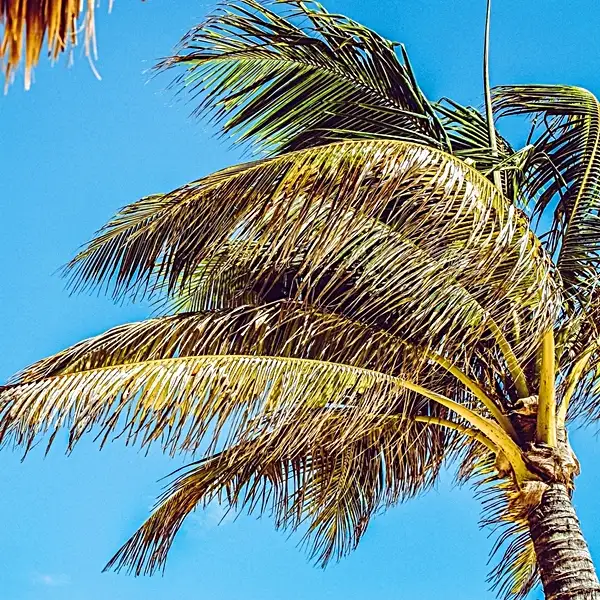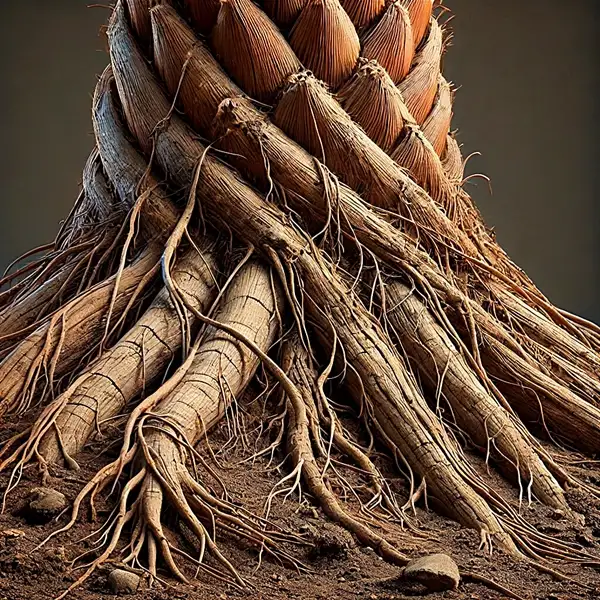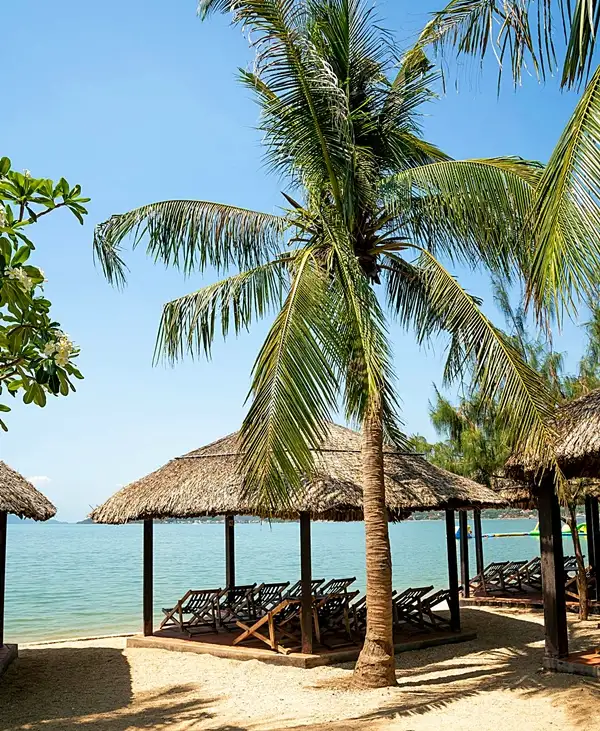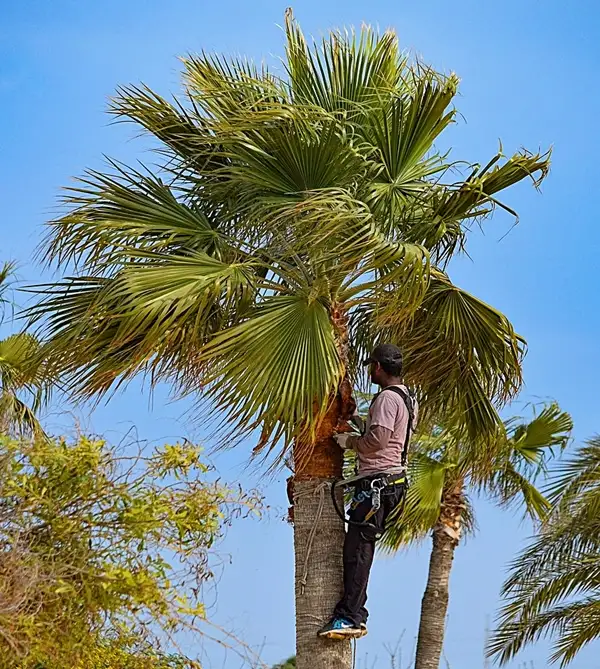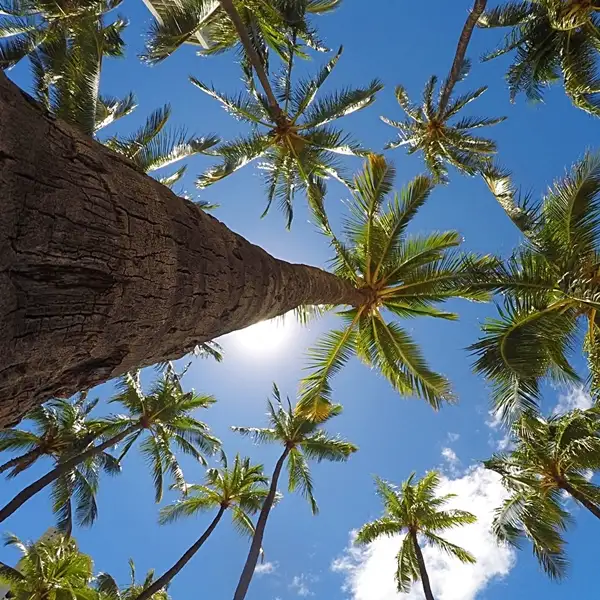Key Takeaways
| Key Takeaway | Why It Matters |
|---|---|
| Understanding Palm Tree Essentials |
|
| Selecting Right Species |
|
| Planting Palm Trees Right Way |
|
| Nourishing for Strong Growth |
|
| Defending Against Threats |
|
Basic Needs of Palm Trees
Palm trees are members of evergreen family that boasts over 2600 species worldwide. They are popular landscaping features in climates ranging from tropical to mild temperate. These versatile plants possess an elegance that uplifts any environment with their iconic fronds & varied heights.
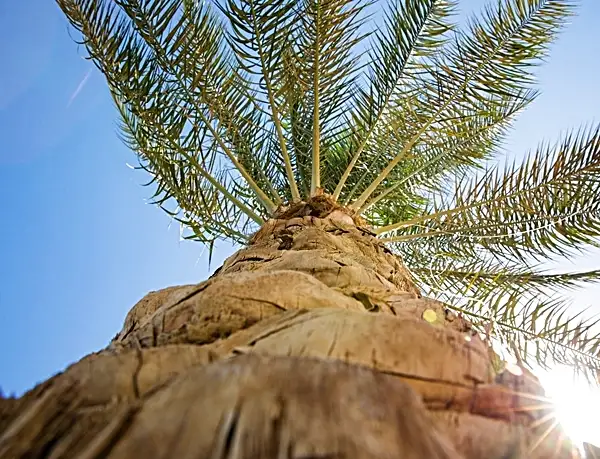
To cultivate healthy palms, it is essential to understand their basic needs.
- First among these are sunlight & warm temperatures. Most palms originate from subtropical or tropical regions, making them lovers of light & heat. Yet, variations exist within broad category of ‘palm tree.’ Keystone knowledge includes comprehension of each variety’s specific requirements regarding light intensity through diverse periods.
- A second fundamental requirement is proper hydration & drainage. While stereotypically associated with beachy landscapes due to salt tolerance, most palm varieties depend on well-drained soil conditions to avoid root rotting—a devastating condition caused by waterlogged soil environments.
- Finally, nutrition plays a vital role in palm health. Providing necessary elements such as magnesium & potassium will ensure vibrant frond color & strong trunk development.
Selecting Right Species of Palm Tree for Your Climate

Choosing a palm suited for your area’s climate is really important. For instance, if you live anywhere near USDA Hardiness Zones 8-11 (which encompass many southern U.S states such as Florida, Texas, California, Arizona & Louisiana where winters are mild enough to support a wide variety of palm trees) you will find yourself spoiled for choice when selecting a suitable palm.
Before making a final decision, consider features such as sun-shade balance in your outdoor space or desired aesthetics – some species grow exceptionally tall while others stay relatively small & serve decorative roles.
8 Famous Palm Species & Their Preferred Climate
| Palm Species | USDA Hardiness Zones | Preferred Climate & Notable Characteristics |
|---|---|---|
| Windmill Palm |
|
|
| Saw Palmetto |
|
|
| Mediterranean Fan Palm |
|
|
| California Fan Palm |
|
|
| Needle Palm |
|
|
| Coconut Palm |
|
|
| Majesty Palm |
|
|
| Date Palm |
|
|
8 Essential Steps for Planting Palm Trees
Planting a palm tree involves more than digging a hole & burying roots. Begin with:
| Step | Description |
|---|---|
| 1. Site Selection |
|
| 2. Timing |
|
| 3. Soil Preparation |
|
| 4. Digging the Hole |
|
| 5. Planting |
|
| 6. Watering |
|
| 7. Mulching |
|
| 8. Staking (if necessary) |
|
4 Essential Nutrients & Best Soil Conditions for Palm Trees
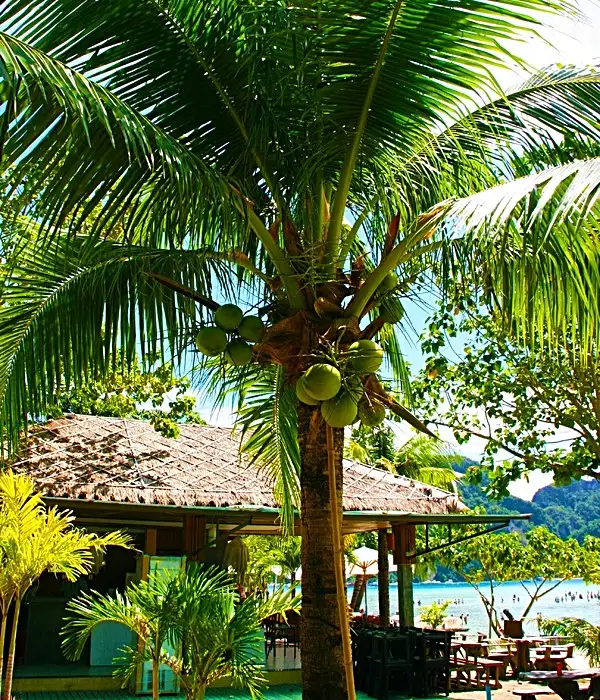
Palm trees have unique nutritional requirements compared to other plants due to their slow growth rate & need for specific nutrients beyond the N-P-K basics familiar to traditional gardeners.
| Nutrient | Role | Deficiency Symptoms | Corrective Measures |
|---|---|---|---|
| Potassium (K) |
|
|
|
| Magnesium (Mg) |
|
|
|
| Nitrogen (N) |
|
|
|
| Iron (Fe) |
|
|
|
My #1 Recommendation for Palm Fertilizer
- Generally, use a quality granular palm fertilizer that is high in potassium & magnesium.
Best Soil for Palm Trees
Another key component is maintaining good soil conditions.
As previously mentioned majority of palms prefer well-drained soils although exceptions exist. Majesty Palms thrive best on wetter sites while desert varieties naturally prefer sandier substrates.
Therefore keep your palm’s origin in mind & select an appropriate soil amendment that enhances local natural soil qualities in a manner befitting your specific tree.
Regular monitoring of pH levels further helps ascertain trees remain within optimal nutrient absorption range.
7 Deadly Palm Pests & Expert Tips for Effective Control
Palm trees like all living things are susceptible to pest infestations & diseases. Know the common pests afflicting palms:
| Pest | Identifying Features | Effects on Palm | Treatment |
|---|---|---|---|
| Spider Mites |
|
|
|
| Scales |
|
|
|
| Mealybugs |
|
|
|
| Palm Aphids |
|
|
|
| Thrips |
|
|
|
| Weevils (e.g., Red Palm Weevil) |
|
|
|
| Fungus Gnats |
|
|
|
3 Bonus Palm Tree Care Tips
- Regular inspection of your palm’s fronds for signs of infestation or disease will speed detection plus expedient treatment thereof ensuring better chances at successful resolution & minimal damage.
- Complementing this active approach is preventative treatment such as regular application of systemic insecticides or fungicides dependent on risks faced by your particular species within local context.
- Lastly! Make sure any pruning equipment used is clean to prevent cross-contamination between infected & healthy plants.
Conclusion
Caring for palm trees need not be complicated. Whether using them for decorative landscaping or simply embracing their tropical aesthetics, understanding their basic needs is essential.
- Selecting suitable varieties for your climate ensures better growth.
- Following proper planting procedures helps establish strong roots.
- Staying vigilant against pests & diseases protects their health.
With proper care! Your palm tree will thrive. It will reward you with years of resilience & scenic splendor!
Frequently Asked Questions
How to care for palm trees in winter?
Mulch around base for insulation. Wrap trunk in frost-prone areas. Reduce watering & move potted palms indoors when needed.
Is it safe to plant a palm tree next to a house?
Yes! If you choose non-invasive species & allow enough space for roots & fronds. Avoid planting near foundations, pipes or power lines.
Is palm tree a lucky tree?
Many cultures associate palms with prosperity, peace & positive energy. It makes them symbols of success & relaxation.
Do palms need a lot of water?
Water deeply but infrequently. Adjust based on species, climate & soil drainage. Tropical palms need more moisture; desert varieties thrive with less.
Should I cut off brown palm leaves?
Yes! But only when fully dry. Premature removal robs the tree of nutrients. Use clean tools to prevent disease.


